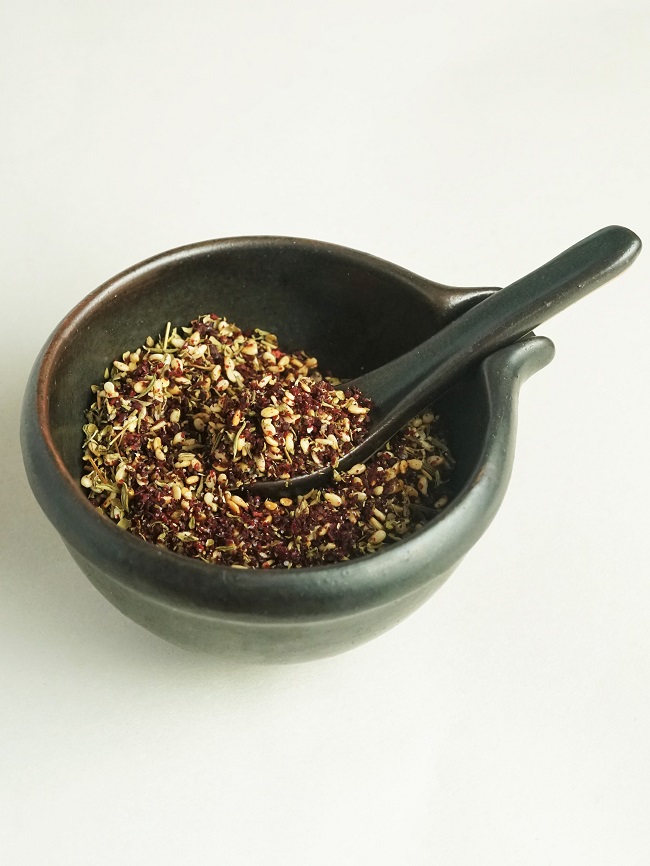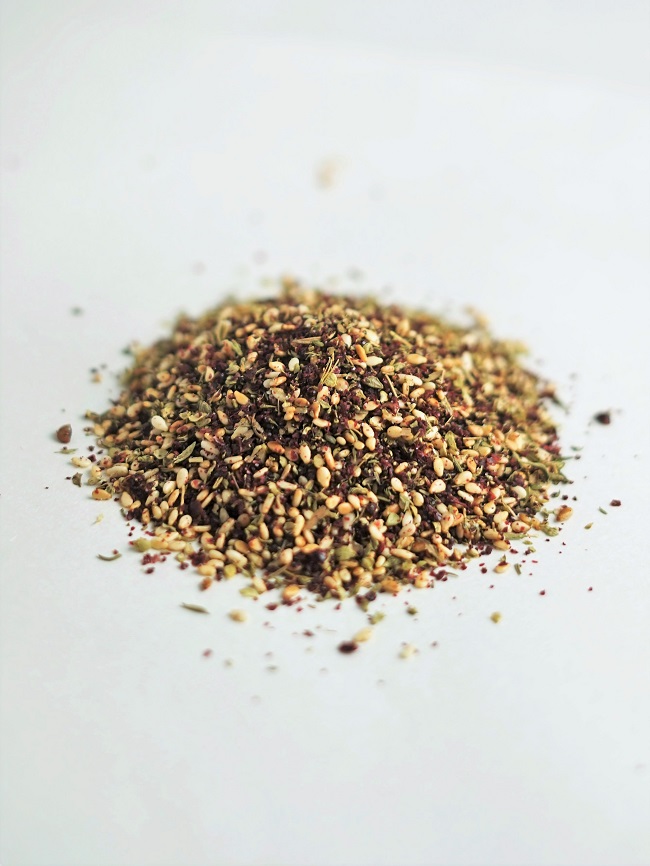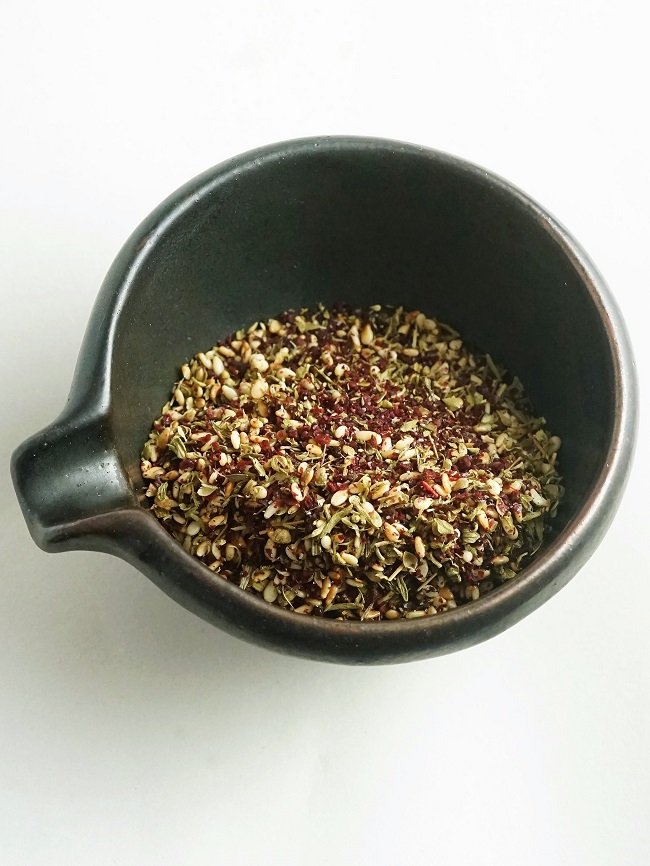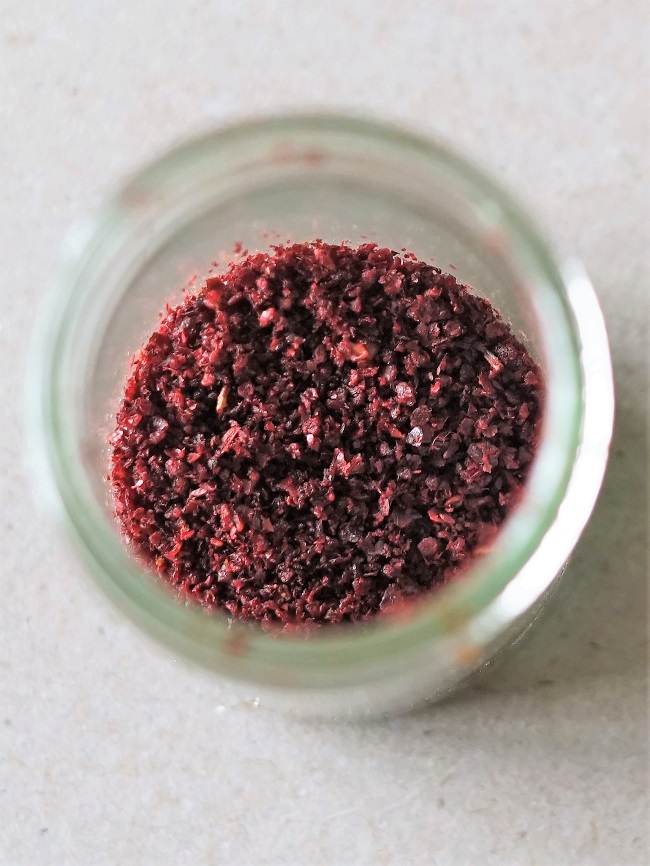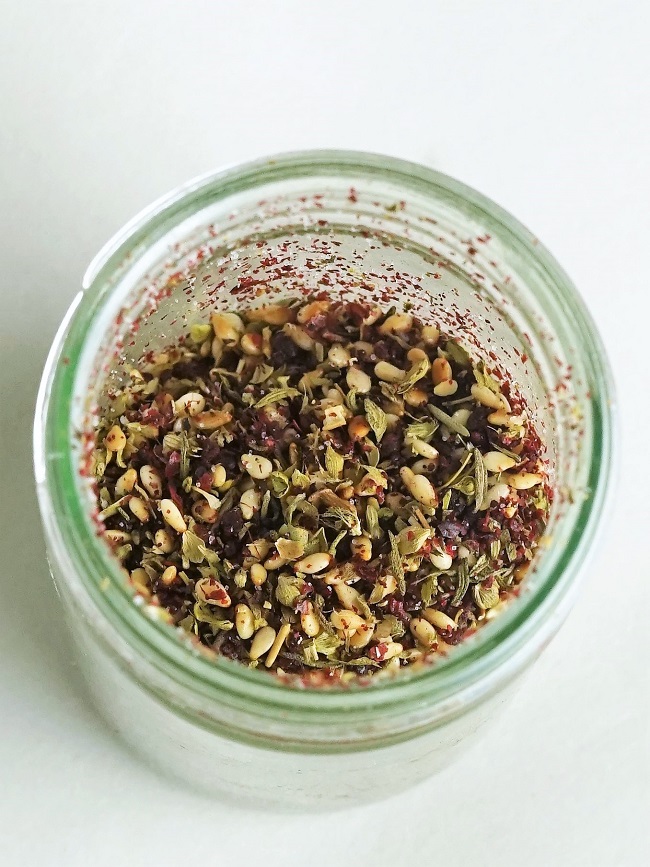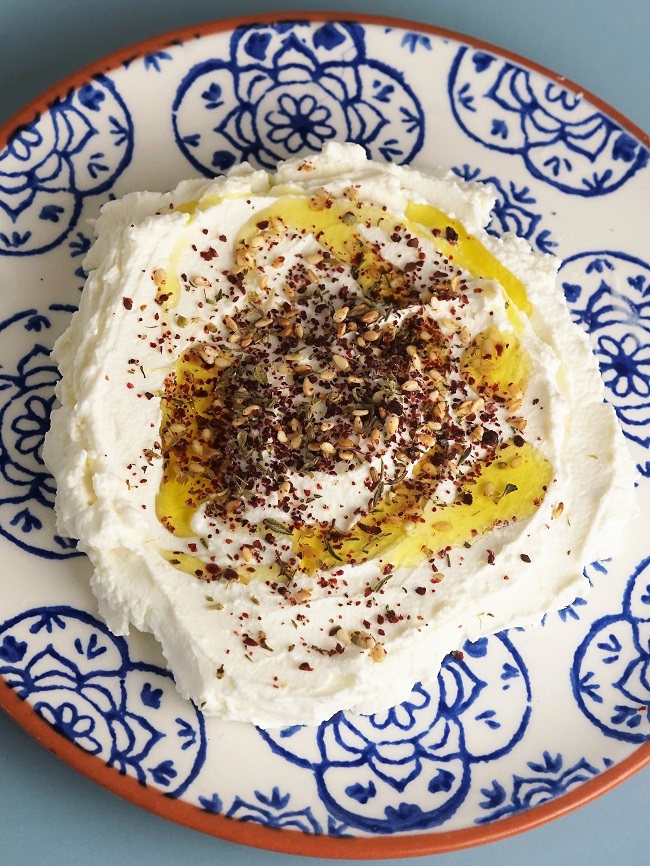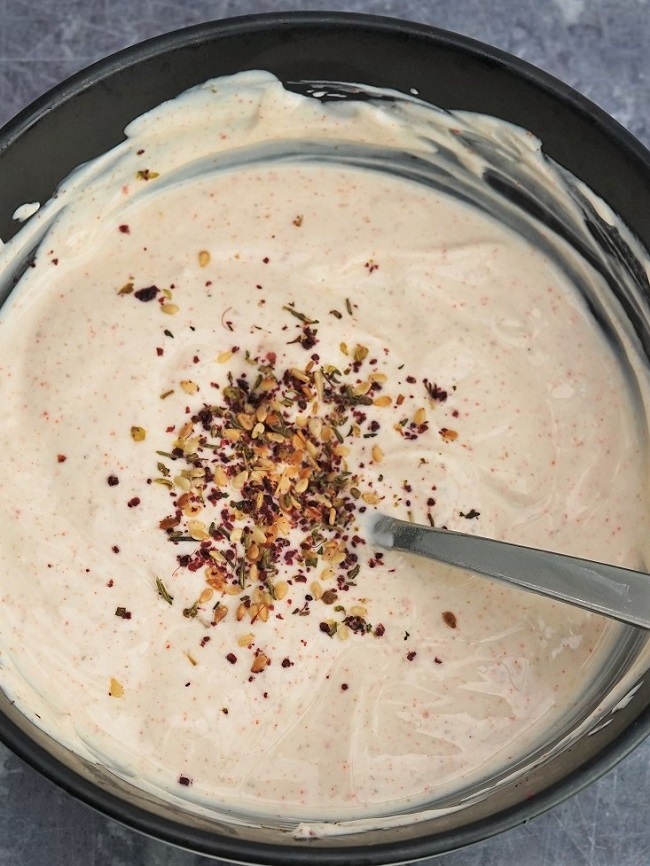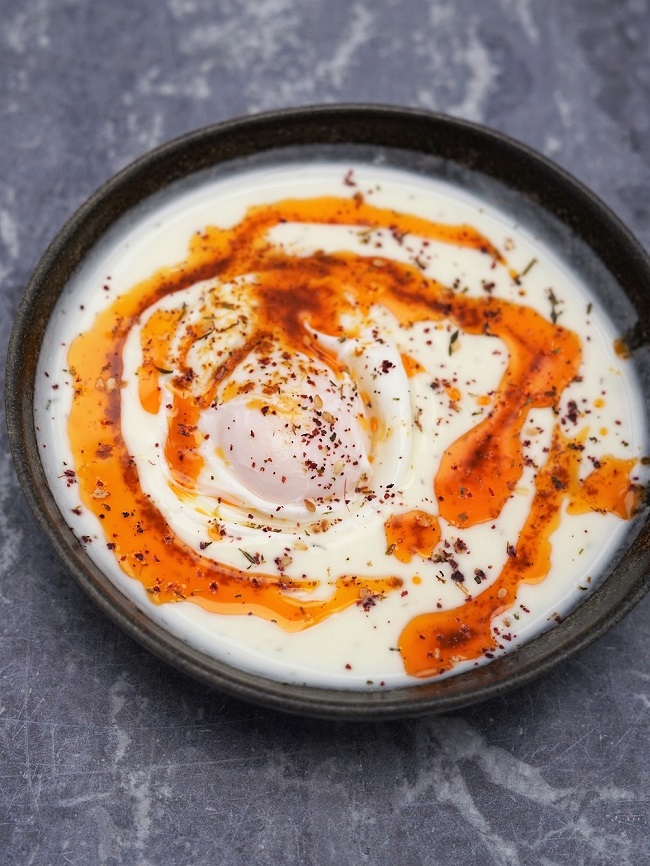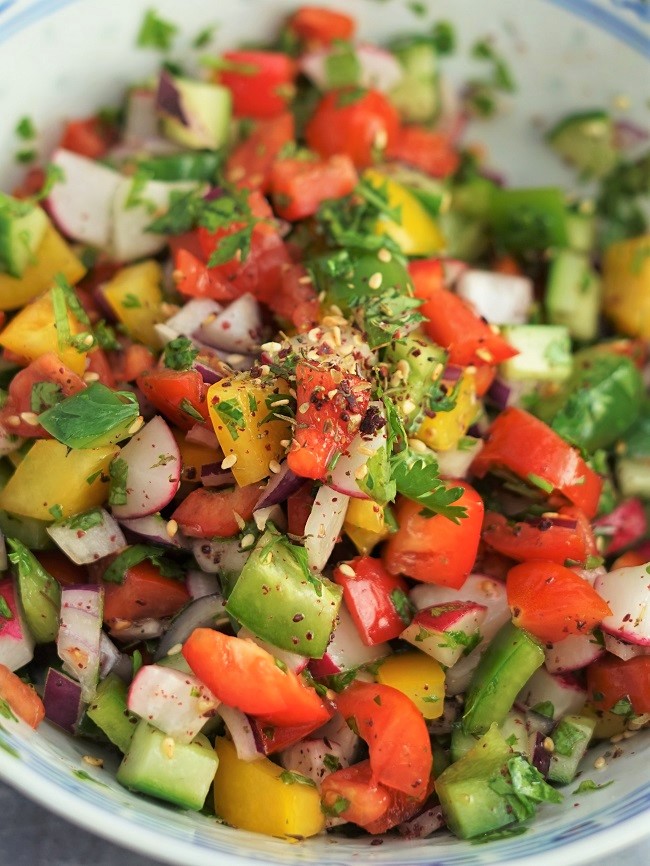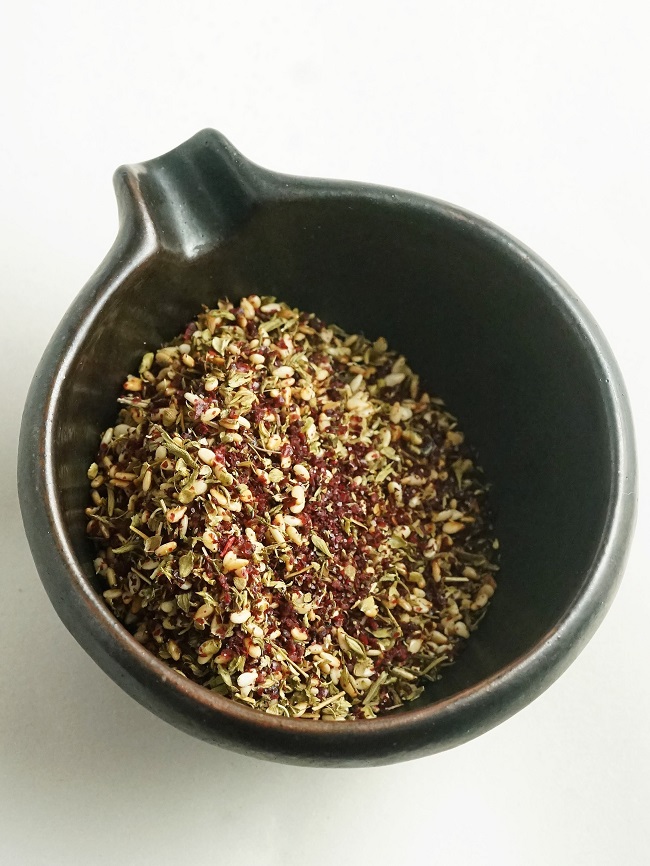Za’atar Spice Blend
Za’atar is a versatile Middle Eastern spice blend that’s a useful addition to your kitchen cupboard.
Eat it with bread and olive oil, sprinkle over roasted vegetables, salads, eggs or yogurt, in marinades or as a dry rub.
While za’atar is becoming more widely available, it’s simple to make at home where you can adapt it to your personal taste.
Jump to Recipe
WHAT IS ZA’ATAR?
These days, za’atar may contain a range of different herbs and spices (e.g. thyme, marjoram, oregano, sumac, cumin) plus salt, often with sesame seeds too. But it wasn’t always so.
Za’atar was originally the Arabic name for a plant with a long history, used by the Ancient Egyptians and mentioned in the Hebrew bible for its ritual and cleansing uses.
It’s often said that plant is hyssop, or at least in the hyssop family. Others say it’s an altogether different plant or perhaps a mixture of local aromatic herbs.
That brings us to the modern meaning of za’atar, which almost exclusively refers to a blend of dried herbs and spices.
As far as I’m aware, you’d be hard pushed to find the actual herb itself, so mixes do not include it.
MY ZA’ATAR
I’ve made various versions and now have my own preferred mixture. I suggest you use my recipe as a guide and tweak it to your own taste.
One ingredient that seems to feature in virtually all versions nowadays is sumac.
Sumac is made from the dried and ground berries found on shrubs of that name.
It’s a beautiful, dark red wine colour and has a tart, lemony flavour.
I find that sumac’s aroma does fade quite quickly, so only buy it in small quantities. For that reason, I also make my za’atar in small amounts too.
The only other ingredients needed are dried oregano and thyme, sesame seeds and a little salt.
I think the sesame seeds add much more flavour when toasted, so gently heat them in a dry frying pan first.
Once they’ve cooled, all you do is mix the sesame seeds with the herbs, sumac and salt to taste.
Put in a jar and, like all herbs and spices, store away from heat and direct sunlight.
USES FOR ZA’ATAR
Za’atar can add a nutty, herby, tart and salty tang to almost anything you care to sprinkle it over.
The most common use in the Middle East seems to be sprinkling over labneh. This is a simple soft ‘cheese’ made by straining the whey from yogurt. The spice mix is a good contrast to its creaminess and I show you how to make labneh here.
Traditionally, za’atar is also eaten with bread: drizzle flatbread such as pita with olive oil, then sprinkle the mix over.
I’m a big fan of eggs and have discovered that za’atar is a great addition to them. Here I had a little leftover aubergine, chickpea & tomato stew so drizzled it with yogurt, added a fried egg with a final sprinkle of za’atar to liven it up.
I love it on yogurt too. I mix in some garlic, salt, cumin and paprika then sprinkle za’atar over the top.
This makes it much more visually appealing as well as adding flavour and texture.
Combining both eggs and yogurt, you could even try za’atar over these Turkish Eggs.
The spice mix can also turn a quite ordinary vegetable salad into something rather special.
Diced vegetables such as tomatoes, cucumber, peppers, radish, onion and herbs (often called Israeli salad, but apparently eaten all over the Middle East) is great with some za’atar stirred in along with olive oil, garlic and lemon juice.
Za’atar is good as a final flourish over roasted vegetables, meat or fish too. Or use it prior to cooking as a rub or incorporate into marinades.
I’m still learning about all the different uses for this most versatile of spice mixes. But the more I use it, the more I love it.
What do you put in your za’atar and how do you like to use it? Leave a comment & let me know.
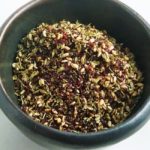
Za'atar spice blend
A versatile Middle Eastern spice blend. Eat with bread and olive oil, sprinkle over roasted vegetables, salads, eggs or yogurt, in marinades or as a dry rub.
Ingredients
- 4 tsp sesame seeds
- 4 tsp ground sumac
- 2 tsp dried oregano
- 2 tsp dried thyme
- 0.5 tsp salt
Instructions
-
Heat a dry frying pan over low to moderate heat.
Add the sesame seeds and stir constantly until lightly browned (3-5 min).
Transfer to a bowl and leave to cool.
-
Add the sumac, oregano, thyme and salt to the cooled sesame seeds and stir to combine.
-
When completely cold transfer to a lidded jar.
Store in a dark, cool place and use within 2 months.

